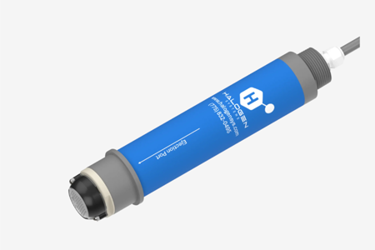Office Of Naval Research Contract Leads To New Chlorine Sensor Technology

A U.S. Office of Naval Research contract to develop a low-maintenance chlorine sensor for next-generation reverse osmosis systems led to the creation of the MP5 Multiparameter chlorine sensor. The military application demanded a highly automated sensor capable of operating for up to 3,000 hours without calibration or maintenance, and one that could function accurately at flow rates from zero to 15 feet per second. Existing sensor technologies could not meet these requirements.
This technology has since been successfully commercialized, with over 3,500 sensors deployed worldwide in demanding applications like ballast water treatment systems, where it operates effectively despite biofouling, scaling, and varying salinity levels.
In drinking water applications, the sensor utilizes an amperometric three-electrode system to accurately detect free chlorine, with automatic compensation for pH, temperature, and conductivity. Key features include NSF/ANSI 61 certification for direct in-pipe installation, flow and pressure independence, and the SensiCLĒNE™ self-cleaning system that enables 6–12 months of unattended, reagent-free operation. By eliminating waste streams, the sensor conserves approximately 70,000 gallons of non-revenue water per year. Its ability to provide comprehensive water quality data from a single unit and its remote monitoring capabilities offer utilities a reliable, efficient tool for proactive management of disinfectant residuals.
Access the full document to explore how this technology transfer enhances water treatment processes and reduces operational costs.
Get unlimited access to:
Enter your credentials below to log in. Not yet a member of Water Online? Subscribe today.
